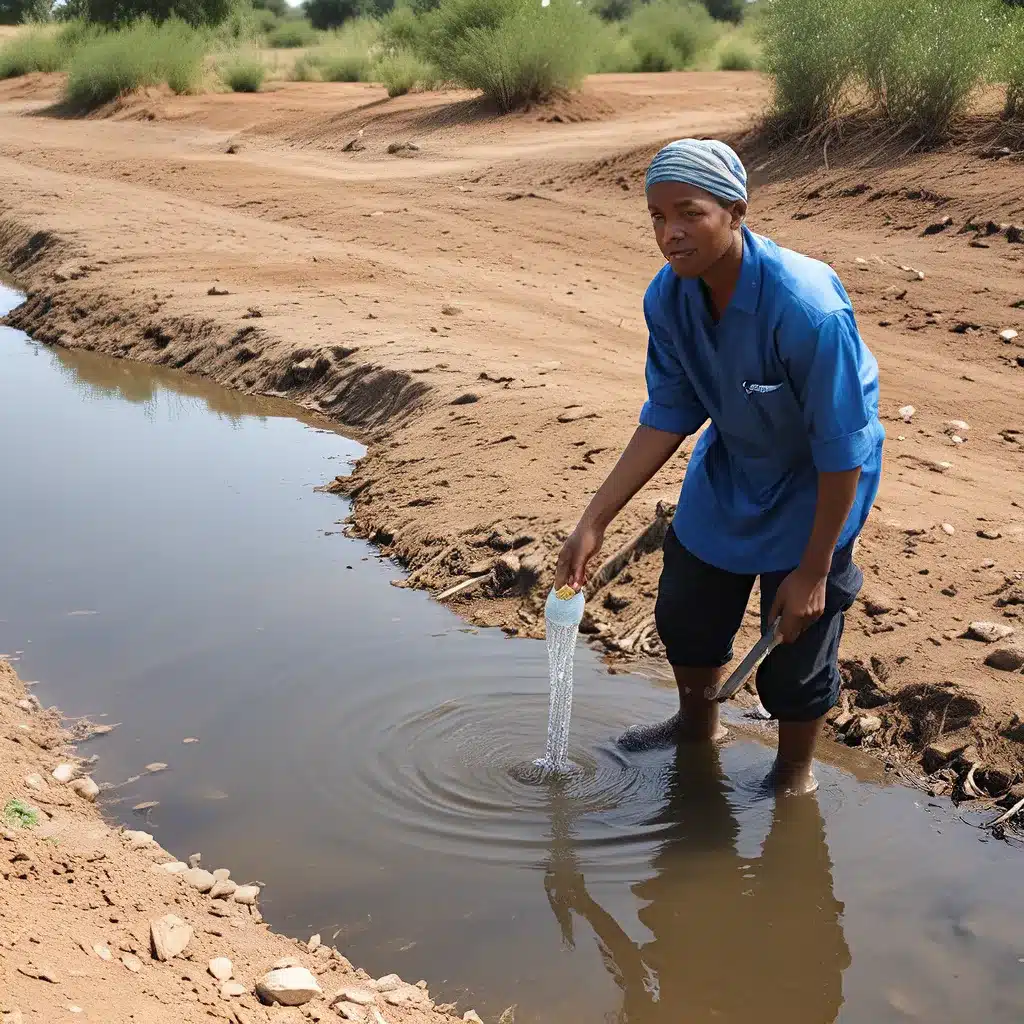
As someone who has always been fascinated by the intricate web of water systems that sustain our world, I’ve come to realize that the quest for water security is a multi-layered challenge that requires a comprehensive approach. In today’s rapidly changing climate, with urbanization and economic development putting unprecedented pressure on our water supplies, the need to diversify our sources has never been more pressing.
Confronting the Challenges of Water Scarcity
Picture this: you’re a city planner, tasked with ensuring a reliable water supply for a growing population. You’re faced with a daunting reality – climate change is causing erratic weather patterns, leading to more frequent droughts and unpredictable rainfall. Meanwhile, the ever-expanding urban landscape is gobbling up precious water resources, leaving you scrambling to keep up. It’s enough to make your head spin.
But fear not, my fellow water warrior, for there are strategies we can employ to fortify our water security. By diversifying our supply sources, we can build resilience and safeguard our communities against the looming threats of water scarcity.
Embracing Source Water Protection and Diversification
One of the most effective approaches to enhancing water security is through source water protection and diversification. As the research from USAID’s Urban Resilience program suggests, these two key strategies can work hand in hand to strengthen the resilience of urban water supplies.
Source water protection involves safeguarding the natural ecosystems and watersheds that feed our water sources. This could mean implementing sustainable land management practices, curbing pollution, or restoring degraded habitats. By keeping our water sources clean and healthy, we can ensure a steady supply of high-quality water for generations to come.
Diversifying our water supply sources, on the other hand, is all about expanding our options. Instead of relying solely on a single source, such as a river or groundwater aquifer, we can tap into a variety of sources – think surface water, recycled water, desalinated seawater, or even harvested rainwater. This multi-pronged approach not only enhances our resilience to climate-related risks but also provides a buffer against any disruptions or contamination that may affect a particular source.
Overcoming the Challenges of Implementation
Of course, putting these strategies into practice is no easy feat. As the USAID study points out, many low- and middle-income countries have struggled to implement source water protection and diversification solutions due to a variety of constraints.
One of the key challenges is the need for effective planning and coordination across multiple stakeholders, from government agencies and water utilities to community groups and private sector partners. Navigating the complex web of regulatory and institutional frameworks can be a daunting task, requiring skillful negotiation and a keen understanding of the local context.
Financing these initiatives is another hurdle, as they often require significant upfront investments. Innovative financing models, such as public-private partnerships or the strategic leveraging of international development funds, can help bridge the gap and make these projects more feasible.
Tapping into the Power of Partnerships
Overcoming these challenges requires a collaborative, multi-stakeholder approach. By forging strategic partnerships, we can draw on a diverse range of expertise, resources, and perspectives to create more comprehensive and effective solutions.
For instance, the San Diego County Water Authority has demonstrated the power of collaboration in its efforts to diversify water sources. By partnering with regional agencies, they’ve been able to secure access to water from the Colorado River and the Sacramento-San Joaquin Delta, reducing their reliance on a single source and increasing their overall water supply reliability.
Similarly, the city of Lilongwe, Malawi has worked with international development organizations to implement a comprehensive source water protection program, which includes reforestation, pollution control, and community engagement initiatives. By involving stakeholders at all levels, they’ve been able to tackle the challenge of water security from multiple angles.
Embracing Innovation and Technological Advances
As we navigate the complex landscape of water security, we must also be willing to embrace innovative solutions and technological advancements. From advanced water treatment systems to data-driven decision-making tools, the water sector is rife with exciting new possibilities.
One promising technology that’s gaining traction is membrane filtration, which can effectively remove contaminants and produce high-quality water from a variety of sources, including brackish or seawater. By coupling this with renewable energy sources, we can create sustainable desalination systems that help expand our water supply options.
Similarly, the use of real-time monitoring and predictive analytics can help us better understand and manage our water resources. By leveraging the power of data, we can identify vulnerabilities, optimize operations, and make more informed decisions about infrastructure investments and emergency response planning.
Fostering a Culture of Water Stewardship
Ultimately, the quest for water security is not just a technical challenge – it’s also a social and cultural one. As we strive to diversify our water supply sources, we must also cultivate a deep sense of water stewardship within our communities.
This means empowering citizens to be active participants in the water management process, through initiatives like public education campaigns, community-based water monitoring programs, and collaborative decision-making forums. By fostering a shared understanding of the value and fragility of our water resources, we can inspire individuals and communities to become champions of sustainable water practices.
It’s a daunting task, to be sure, but one that is essential for the well-being of our planet and the generations to come. As we continue to grapple with the realities of water scarcity, let us embrace the power of diversification, innovation, and partnerships to secure a more resilient and sustainable water future.


